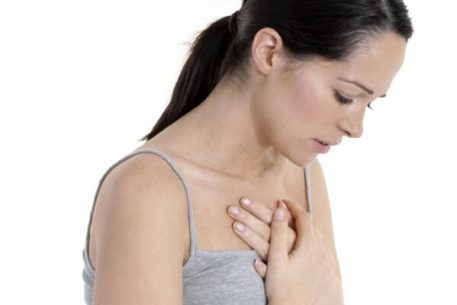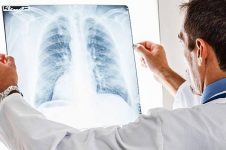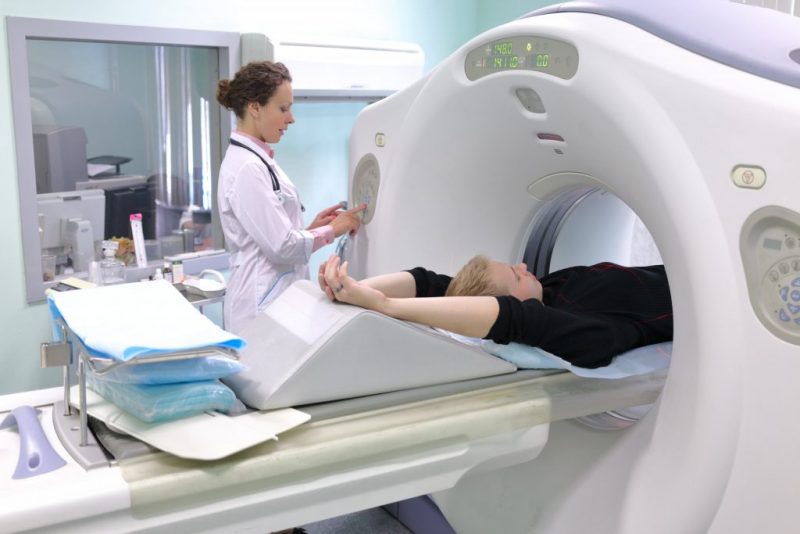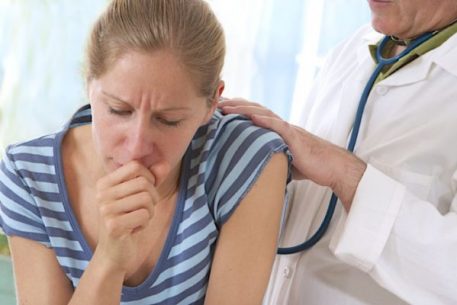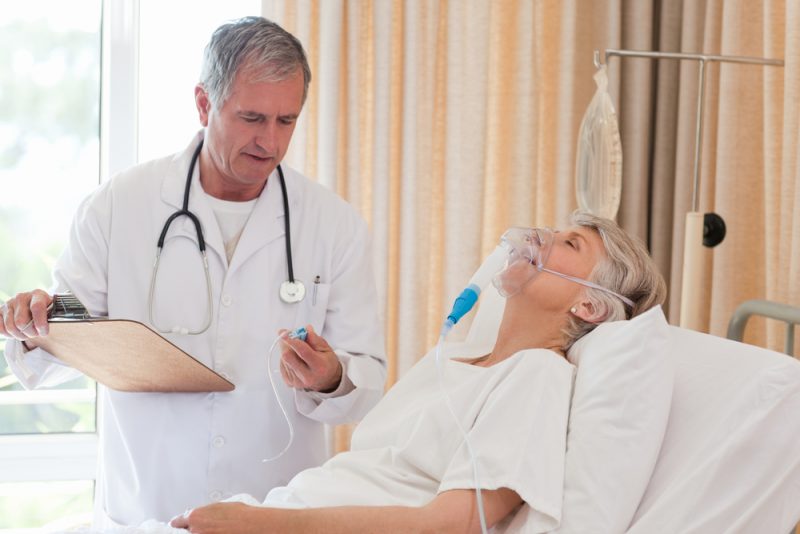Inflammation of the lungs has always been considered one of the most dangerous diseases. It develops as a result of pathological microflora in the lung tissue. Symptoms of pneumonia in an adult without temperature most often resemble the most common flu or SARS. This type of disease can have unpleasant consequences, since the patient is unaware of his accurate diagnosis and does not start timely treatment.
Material Content:
Symptoms and signs of pneumonia without fever
Any pneumonia, even if it occurs without temperature, is accompanied by dangerous inflammatory processes in the lungs. In no case can we say that if the symptoms of the disease are weak, then inflammation is insignificant. This does not happen. This type of ailment, as a rule, provokes an infection in the body, for others the disease is not dangerous.
The signs of pneumonia in an adult without temperature are significantly different from those characterized by the presence of temperature. One of the most unpleasant moments is the presence of a cough. During the development of the disease in the body, the size of healthy lung tissue decreases, which leads to rapid breathing. In this way, the body is trying to fight oxygen starvation.
Other symptoms of pneumonia without fever include the following:
- Constant weakness for no apparent reason. A person can get tired even after a little physical exertion.
- Chest pains.For older people, a displacement of the pain focus is possible, as a result of which it is taken for muscle cramps.
- Dry cough, but it is not always present, especially if taking antitussive drugs.
- Unusual chest movement during respiratory processes.
- Insignificant power loads significantly accelerate the heartbeat.
- Pain remains in the upper body during pivoting movements.
- Body temperature, as a rule, keeps at around 37 degrees, and for a rather long time. This is usually not alarming, since a person does not attach importance to it.
If you notice at least one of the above symptoms or your cough does not go away for more than 2 weeks, then it is better to seek the advice of a specialist.
Features of the course of the disease
Viral pneumonia is most often the result of the flu. The first few days a person feels unwell, but the temperature does not rise. Then shortness of breath appears, pains in the chest area are felt. Inflammation of the lungs without special symptoms is considered one of the most dangerous, since it is not always possible to identify the disease in the first stages.
The first signs of pneumonia are often accompanied by a cough. The reason that the temperature remains at normal levels may be a preliminary intake of antitussive medicines. They also say that the temperature does not rise with too weak immunity. In this case, the body cannot determine where inflammatory processes occur in the body.
Pneumonia can occur as a result of untreated bronchitis. Against the background of regular intake of the drug, the body reacts slowly to the penetration of a new infection.
The patient feels symptoms that are characteristic of pneumonia, however, due to the lack of temperature, he constantly writes them off for the presence of a cold. You should be warned by the constant presence of fatigue and weakness, and even more so that against the background of systematic medication, you do not feel relief.
With asymptomatic pneumonia (this form is also called SARS), the x-ray may not show any blackouts or signs of inflammation, but the patient has general intoxication, weakness, sweating, pain in the muscles and head, shortness of breath and so on .
Diagnostic Methods
Only a specialist can diagnose the disease. Initially, a patient survey is conducted. This will determine what could provoke the disease. Then the doctor should analyze the symptoms and try to identify the characteristic signs for pneumonia. It is imperative to examine the chest and listen to the lungs.
An accurate diagnosis will establish the following measures:
- computed tomography of the lungs;
- analysis of urine and blood;
- inspection of the bronchi, for which special equipment is used;
- sputum analysis, with which it is possible to identify which antibiotic infections are resistant, and which not;
- pulse oximetry (the procedure reveals the level of respiratory failure);
- X-ray, which allows you to determine in which place the foci of inflammation and their severity begin to develop.
Treatment
It is impossible to cure pneumonia in 2-3 days. The course of treatment can be several weeks and must be comprehensive. Traditional medicine can only be used as auxiliary: it is simply impossible to get rid of an illness only with their help.
Traditional treatment
A medical course of treatment consists of taking drugs from several pharmaceutical groups.
- Nonsteroidal anti-inflammatory drugs. They help stop inflammation and reduce the intensity of the pain syndrome.
- Anti-inflammatory drugs, which are based on glucocorticosteroids. They also allow you to stop inflammation, but with a more global clinical picture.
- Antibiotic therapy is carried out only after tests for sensitivity to drugs are done. Otherwise, you can only aggravate the situation and provoke serious consequences.
- Reception of antispasmodics and painkillers.
It is quite difficult to diagnose pneumonia without fever with a cough, since the second symptom can often be the result of a prolonged SARS.
Folk remedies for pneumonia
Additional treatment of pneumonia in adults is allowed by folk remedies.
The benefits of this treatment are as follows:
- All products are of natural origin.
- In most cases, medications are safe.
- They can be used for those patients who have intolerance to certain drugs.
- Cheapness.
Among the negative properties include:
- Allergies to some components.
- To feel the effect, you need a long course of taking drugs.
- The desired result is possible only with the right combination of drugs.
- In severe cases, only medical treatment is required, otherwise you can lose not only health but also life.
The following remedies can be used to treat pneumonia:
- Infusion of coltsfoot. A glass of boiling water will require 2 tablespoons of herb. Insists half an hour, take three times a day for 1⁄4 cup. A drink will help eliminate intoxication.
- Rosehip infusion due to a large amount of vitamin C enhances the protective functions of the body.
- Aloe leaves, previously peeled of thorns and peels, are mixed with honey. Insist for a week, and then taken as an anti-inflammatory agent.
In order to reduce cough, you can take plantain leaves three times a day, which are combined in equal proportions with honey.
Consequences and complications of the disease
If you turned to specialists for help in time, then the likelihood that complications arise will be minimized. Unpleasant consequences can be caused by improper treatment and the course of the disease.
What can be the complications of pneumonia:
- Sepsis - infection spreads throughout the body. The blood vessels carry out the transport function.
- Acute respiratory failure.
- Swelling of the lungs.
- Pleurisy.
- Abscess of the lung.
Preventative measures
In order to prevent the re-development of the disease, it is necessary to adhere to elementary preventive measures:
- do not overcool;
- in the autumn-spring period, take additional vitamin complexes;
- lead an active lifestyle and go in for sports;
- learn to do breathing exercises;
- eat right and balanced;
- do wet cleaning regularly and wipe dust;
- avoid stressful situations;
- give up bad habits;
- for chronic inflammatory processes of the nasopharynx, do sanitation;
- temper the body.
It is very important to diagnose pneumonia without fever in the initial stage. This will not only allow you to prescribe the right treatment in a timely manner, but also save you from serious consequences.



